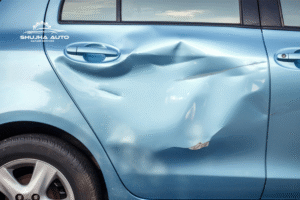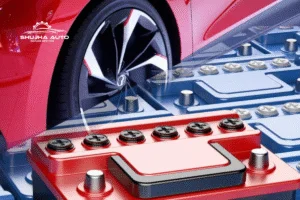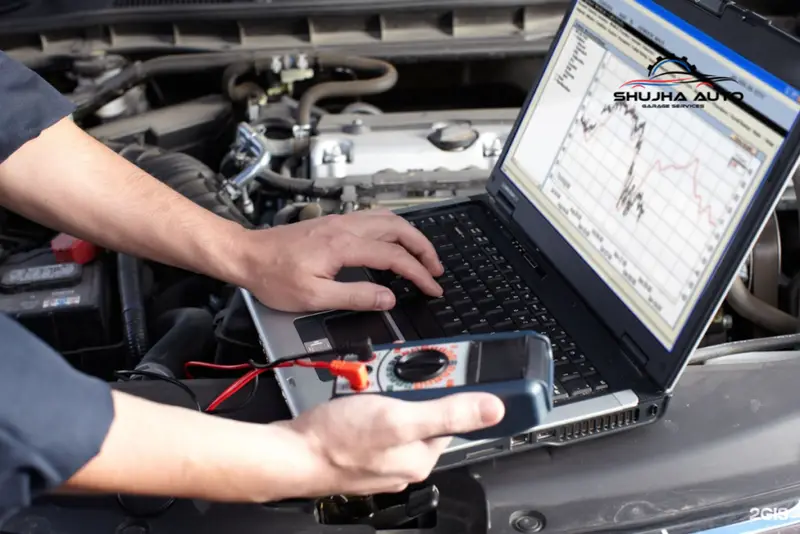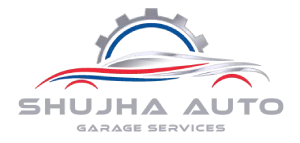Discover 6 common car electrical problems and their solutions. Learn how to diagnose and fix issues like battery failure, faulty wiring, blown fuses, and more.
Ever turned your key and heard nothing? Or notice your headlights flickering at night? Chances are, you’re dealing with an electrical problem in a car. These issues can be frustrating and, if left unchecked, costly. But the good news is that many of these problems are common and easily fixable—if you know what to look for.
Understanding car electrical problems and solutions is key to preventing breakdowns and avoiding expensive repairs. Your car’s electrical system powers everything from the starter motor to the headlights and the infotainment system. It’s the heartbeat of your vehicle, and when it falters, everything else does, too.
Electrical problems often sneak up on you. One day, everything’s working fine; the next, your battery’s dead, or your dashboard is lit up like a Christmas tree. That’s why learning the basics of car electrical problems and solutions can save you both time and money. Whether you’re a seasoned driver or a beginner, a little knowledge goes a long way.
Throughout this article, we’ll walk you through six of the most common car electrical issues, explain what causes them, and show you how to fix them safely and efficiently.
When to DIY and When to Call a Mechanic
While some electrical fixes are simple, like changing a fuse or tightening a loose terminal, others can be more complex. Replacing an alternator or tracing a short circuit in the wiring can require tools and experience that most drivers don’t have. Knowing when to roll up your sleeves and when to call a professional is just as important as understanding the problem.
Here’s a quick tip: if the problem is affecting multiple systems, smells like burning plastic, or involves exposed wires, it’s time to consult a mechanic. Safety first!
Let’s dive into the top six car electrical problems and solutions every car owner should know.
1. Dead Battery
Common Symptoms of a Dead Battery
A dead battery is by far the most common electrical issue drivers face. If you turn the ignition and hear a slow crank—or nothing at—you’ve probably got a battery problem. Other signs include:
- Dim dashboard lights
- No response when turning the key
- Clicking sound without engine turnover
- Electronic accessories (radio, windows, etc.) are not working.
Most car batteries last between 3 to 5 years. Extreme weather in the UAE, whether it’s scorching heat or a rare winter chill, can shorten battery life. Combine that with leaving lights or electronics on, and you’ve got a recipe for a dead battery.
How to Fix a Dead Battery
The quick fix? Jump-start the car. Here’s how:
- Connect the red jumper cable to the positive (+) terminal of the dead battery.
- Connect the other end to the positive terminal of the working battery.
- Attach the black cable to the negative (-) terminal of the working battery.
- Attach the last black clamp to a metal surface on the car with the dead battery (not the battery itself).
- Start the working car, then try starting the dead one.
If your car starts, leave it running for 15-30 minutes to recharge the battery. If it doesn’t start or dies again soon after, you may need to replace the battery entirely.
Pro Tip: Always check for corroded terminals. Cleaning them with baking soda and a wire brush can sometimes solve the issue without a jump.
Using the keywords car electrical problems and solutions, battery issues top the list. Make sure you recognize the signs early.
Location: Please Visit Our Shujha Auto Garage
2. Faulty Alternator
Signs Your Alternator is Failing
The alternator keeps your battery charged and powers electrical systems while the engine runs. When it fails, your battery quickly drains—even if it’s brand new. Here are some red flags:
- Warning light on dashboard (battery or ALT symbol)
- Dimming or overly bright lights
- Strange noises (whining or grinding)
- Electrical failures (radio, power windows, AC)
- The car stalls shortly after starting
If the alternator fails, your car will shut down shortly after turning on.
What to Do About It
Unlike a battery swap, replacing an alternator is more complex and usually not a DIY job. But you can test the alternator yourself using a multimeter:
- When the car is running, check the battery voltage.
- It should read between 13.5 to 14.5 volts. Anything lower means the alternator isn’t charging properly.
If it’s faulty, the only solution is to replace the alternator. Costs vary, but expect to pay between AED 600–1000, including labor, depending on your vehicle model.
Again, this falls under the category of car electrical problems and solutions that are common but critical. Don’t delay fixing a bad alternator—it can leave you stranded.
3. Blown Fuses
What Causes Car Fuses to Blow?
Fuses are tiny but vital components that protect your car’s electrical circuits. When too much current flows through a circuit, the fuse blows to prevent damage. Think of it like a mini bodyguard for your car’s wiring.
Blown fuses can be caused by:
- Short circuits
- Water intrusion
- Faulty aftermarket accessories (like stereo systems)
- Overloaded circuits
The good news? This is one of the easiest car electrical problems and solutions to fix yourself.
Replacing Fuses the Right Way
Here’s how to replace a car fuse:
- Locate your car’s fuse box (usually under the dashboard or in the engine bay).
- Use the fuse diagram to identify the faulty one.
- Check the fuse—if the metal strip inside is broken, it’s blown.
- Replace it with a fuse of the same amperage rating (usually colour-coded).
Never insert a higher amp fuse “just in case.” It may cause more severe damage or even start a fire. If the fuse keeps blowing repeatedly, the underlying issue—like a short circuit—needs professional attention.
Fuses are small fixes with a big impact. They’re the unsung heroes of the car electrical problems and solutions world, and having a few spares in your glovebox can be a real lifesaver.

4. Malfunctioning Starter Motor
How to Identify a Bad Starter Motor
Your car’s starter motor is responsible for cranking the engine when you turn the key or press the start button. If your battery is fine but your engine still won’t start, the starter motor might be the culprit.
Here are some telltale signs of a bad starter motor:
- You hear a single click or no sound at all when turning the key.
- The dashboard lights turn on, but the engine doesn’t crank.
- You see or smell smoke (a potential short circuit or burned-out motor).
- Intermittent starting—sometimes it works, sometimes it doesn’t.
In many cases, the symptoms mimic a dead battery, which is why diagnosing this issue correctly is important.
Quick Fix or Full Replacement?
Start with the basics: check the battery terminals and starter connections. Loose or corroded wires could be the issue. Clean the terminals, tighten the bolts, and try again.
Still not working? You can try the tap test. Gently tap the starter motor with a wrench while someone turns the key. Sometimes, a stuck gear can be freed temporarily, but this is just a band-aid solution.
Ultimately, if the motor is faulty, you’ll need to replace the starter, which usually costs between AED 500 and AED 1200, depending on the make and model. This repair is best left to a professional mechanic.
Among all the car electrical problems and solutions, starter motor issues are one of the more serious ones. They can leave you completely stranded, so acting fast is essential.
5. Dim or Flickering Headlights
Diagnosing the Problem
Headlights that flicker or dim unexpectedly are not only annoying but also dangerous, especially when driving at night. This issue can signal several possible electrical faults.
Common causes include:
- Weak battery or failing alternator
- Loose wiring or ground connections
- Corroded headlight terminals
- A faulty headlight switch or relay
If the problem happens only when you rev the engine or turn on accessories, it’s often a sign that your alternator can’t keep up with the electrical load.
Fixing Headlight Electrical Issues
Start by checking your battery voltage. A low charge can cause all lights to dim. Clean the battery terminals and ensure all connections are tight. Then, inspect the headlight wiring and connectors. Look for signs of burning, corrosion, or loose plugs.
If your car uses halogen bulbs, it might just be time for a replacement. If it’s an LED or HID setup and the flickering persists, have the headlight control module checked.
In many cases, this is one of the easier car electrical problems and solutions to fix. But don’t ignore it—poor visibility can lead to serious safety risks.
6. Electrical Wiring Issues
Signs of Wiring Problems in Cars
Electrical wiring runs through every part of your vehicle, and over time, it can degrade or get damaged. Rodents, wear and tear, heat, and even poor aftermarket installations can cause havoc in the wiring system.
Signs of wiring issues include:
- Random warning lights on the dashboard
- Fuses blowing repeatedly
- Intermittent electrical problems (AC, radio, windows working on and off)
- A burning smell or visible melted wires
- The battery drains when the car is off
Because wiring connects nearly every component in your vehicle, damage here can result in multiple, hard-to-trace issues.
How to Safely Repair Car Wiring
Dealing with car wiring isn’t as scary as it sounds, but you do need to be careful. Start by identifying the affected circuit—a fuse diagram or multimeter can help. Inspect visible wiring for any exposed or damaged sections.
You can use:
- Electrical tape for temporary fixes
- Heat-shrink tubing for more permanent insulation
- Wire connectors or soldering for replacing broken wires
Always disconnect the battery before doing any wiring work to avoid shorts or shocks. If the damage is extensive or hard to trace, call a certified auto electrician.
Among all car electrical problems and solutions, wiring issues are the most complex but also the most preventable with regular inspections.
Preventive Tips for Car Electrical System Health
Regular Battery Checks
Prevention is better than a cure—especially when it comes to electrical issues. Regularly check your battery health, especially before long trips. Most garages can test your battery for free in under 10 minutes.
Make it a habit to:
- Inspect for corrosion on terminals
- Tighten loose connections
- Check voltage with a multimeter (12.6V when off, 13.5–14.5V when running)
A small effort can save you a lot of money and inconvenience.
Keep Wiring and Terminals Clean
Dirt, oil, and moisture are the enemies of your car’s electrical system. Use a contact cleaner spray or mild detergent to clean terminals and wire connectors occasionally. Make sure all connectors are sealed and protected from water and heat.
Also, avoid overloading the system with too many aftermarket accessories like high-powered audio systems or underglow kits. Always use fuses and proper wiring techniques.
Regular maintenance and inspection are the keys to avoiding most car electrical problems and solutions. Think of it like brushing your car’s teeth—do it often, and you’ll prevent bigger issues down the road.
Conclusion
Car electrical problems can sneak up on anyone, but with the right knowledge, you can catch them early and fix many of them yourself. From a dead battery to wiring issues, these six problems are the most common—and fortunately, the most manageable.
By understanding these car electrical problems and solutions, you’ll not only save money but also increase your vehicle’s lifespan and reliability. Stay informed, stay safe, and never ignore the warning signs. Your car—and your wallet—will thank you.
FAQs
What is the most common electrical problem in cars?
A dead battery is the most common issue, especially in hot climates like the UAE, where batteries degrade faster.
Can I fix the car’s electrical issues myself?
Yes, basic problems like dead batteries, blown fuses, and dim lights can often be fixed at home with simple tools and a little knowledge.
How much does it cost to fix electrical problems in a car?
Costs vary. A new fuse may cost a few dirhams, while a new alternator or starter motor could run over AED 1000 with labour.
How often should I check my car’s electrical system?
Check your battery and basic connections every 3-6 months. A full inspection by a mechanic once a year is a good idea.
Is it safe to drive with electrical issues?
Minor issues like a blown radio fuse aren’t urgent, but problems like flickering headlights, battery warnings, or starting troubles should be addressed immediately.








